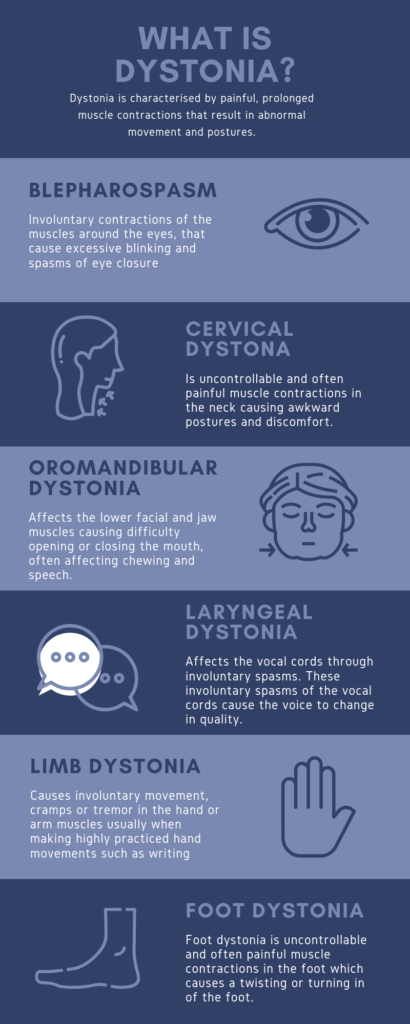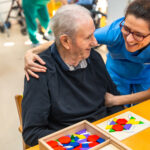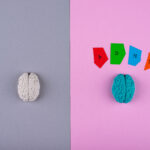What Are the symptoms, causes and treatments for Dystonia?
Dystonia is a movement disorder that is characterised by painful, prolonged muscle contractions. These contractions cause involuntary repetitive or twisting movements and sustained muscle contractions, resulting in abnormal movements and postures.
Symptoms usually start in one region of the body, such as the neck, face, vocal cords, an arm or a leg, and then may spread to other parts of the body.
The severity of the disorder varies between individuals with many maintaining a relatively normal lifestyle, whereas some people may require full-time assistance.
What are the symptoms of dystonia?
Symptoms of dystonia can range from very mild to severe and can affect different parts of the body.
Some early symptoms include:
- Involuntary pulling of the neck
- Cramping of the foot
- Uncontrollable blinking
- Difficulties with speech
Symptoms can occur or even worsen due to stress and fatigue. It can also cause exhaustion in individuals due to the constant contraction of the muscles.
If symptoms of dystonia occur in children, they generally start to appear in the hand or foot. It then quickly progresses to the rest of the body. However, the rate of progression slows down after the child reaches adolescence.
Dystonia is early adulthood typically begins in the upper body. Progression of dystonia is slow and either affects one part of the body or two or more adjacent body parts.
What causes dystonia?
Although the cause is not known, Dystonia likely results from the dysfunction of the basal ganglia in the brain. This area of the brain is responsible for initiating muscle contractions.
Damage to the basal ganglia could be the result of:
- Parkinson’s disease
- Huntington’s disease
- Wilson’s disease
- Traumatic brain injury
- Injury at birth
- Stroke
- Brain tumour or certain disorders that develop in some people with cancer
- Oxygen deprivation or carbon monoxide poisoning
- Infections, such as tuberculosis or encephalitis
- Reactions to certain medications or heavy metal poisoning
Primary dystonia (idiopathic dystonia) is often inherited from a parent, with symptoms varying among family members. However, not all carriers of the disorder develop dystonia themselves.
Main types of dystonia
The different types of dystonia are classified by the body part they affect:
- Generalised dystonia affects most of or all of the body.
- Focal dystonia: only affects a specific body part.
- Segmental dystonia: affects adjacent body parts (i.e, eyes) or close to one another.
- Multifocal dystonia: affects two or more unrelated body parts.
- Hemidystonia: affects the arm and leg on the same side of the body.
Dystonia can also be classified as a syndrome depending on the patterns. In the infographic below we share 6 different types of dystonia:

How is dystonia treated?
There are several options for treating dystonia. The course of treatment will be determined by the type of dystonia and its severity.
Botulinum toxin (Botox) is injected into the affected muscle. The toxin blocks the effect of the chemical acetylcholine that produces muscle contractions. This injection will need to be repeated every three months.
If dystonia is causing a disability, deep brain stimulation is an option. Deep brain stimulation is an electrode that is implanted into a particular area in the brain. This is then connected to a battery-powered stimulator implanted in the chest which transmits electrical pulses into the brain, reducing the muscular contractions.
Speech therapy, physical therapy, and stress management can also be used to treat the symptoms of dystonia.
Contact us today if you have any questions or concerns that we may not have covered in this blog post, or if you would like to speak to a specialist neurologist.





